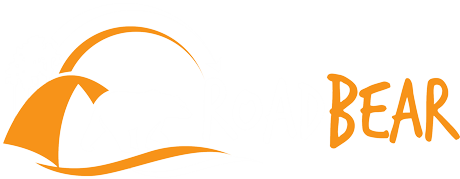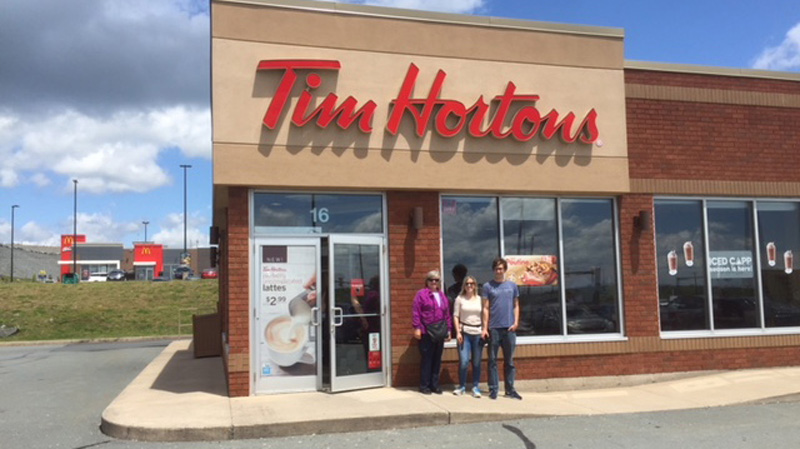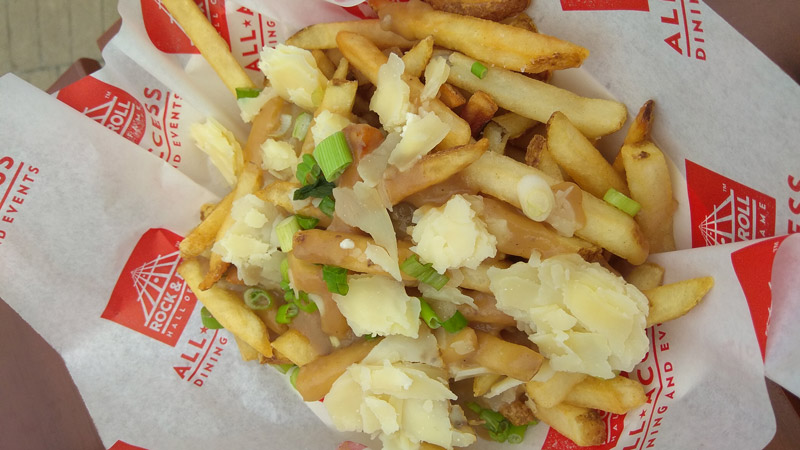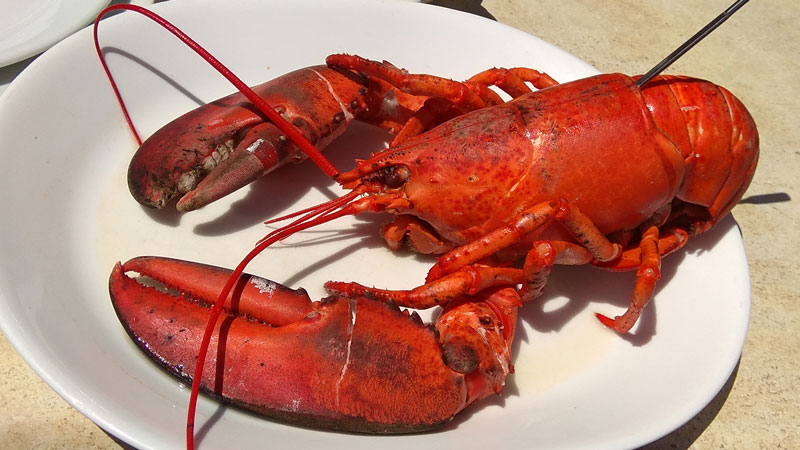Canada was the first country we visited on this trip. The moment when we saw land for the first time after the 8-day Atlantic crossing was somehow epic and when we felt solid ground under our feet for the first time, we knew that the adventure was about to begin. An effortless start was made possible by John and Cheri, who live in Halifax and where we were allowed to spend the first days and organize ourselves. In the first days on the road in the car we already experienced the full range of what this new nomadic life would mean. We already had to endure snow, storm and rain, but we also found sensational places to stay overnight, which will be among the most beautiful until the end of the trip. We plunged into the wild rugged beauty of Nova Scotia and were faced with our first big challenge when we locked ourselves out of the car after only 3 days.
We continued through miles of forests in New Brunswick, visited romantic cities in Québec and admired America's largest waterfalls in Ontario.
In British Columbia and in the Yukon we have crossed untouched nature and eternal expanses until we set off in Dawson City for one of the greatest adventures of our time. Together with Jessica and Jorge (@liveworkwander) we drove the Dempster Highway, arrived in Tuktoyaktuk at the most northern point of our journey and experienced the Indian Summer in its full splendour.
To escape the forthcoming onset of winter, we headed south again. On our way we met bears, moose, enormous glaciers and crystal clear lakes. From Prince Rupert we covered part of the way back to water and arrived at the end of the Inside Passage in Port Hardy on Vancouver Island. In Campbell River another highlight was waiting shortly before the end of our Canada trip. We could experience an unforgettable whale watching tour, where we could watch jumping humpback whales at close range. In Vancouver we enjoyed the varied culinary offer, before we prepared ourselves for the border crossing into the USA.
Although we have experienced and seen a lot in the two months we have spent in Canada, this was only a fraction of what this huge country has to offer. There are many reasons to come back at a later date.
ENTRY
19.06.2018 HALIFAX
The entry was fast and unproblematic. The customs officers came to the ship to complete the formalities. We had to answer a few standard questions (whether we were importing tobacco, alcohol, weapons, etc.) and were asked about our savings for the trip. We did not have to show any documents (apart from our passports of course) and received a residence permit for 6 months.
08.08.2018 CARWAY
The entry went very fast and without problems. The nice lady in the customs house did not know at first how to record our foreign number plate in her system, but found a solution. She was interested in our trip and apart from answering the usual questions (alcohol and weapons?), she didn't want to know anything else about us.
18.08.2018 PLEASANT CAMP (Haines Highway)
The duty is located about 500m after the geographical border. We passed the border after 20.00 o'clock (opening hours: 8.00 o'clock in the morning until midnight) and had to answer the usual questions about alcohol, tobacco, weapons, etc. in our luggage. Mathias answered all questions with "No". The customs officer then wanted to know more, such as whether we were importing things into the country that we would leave in Canada, and finally asked for bear spray. Mathias also gave us the obligatory "No". That was probably the time when the official became skeptical, because practically every traveller in this area will probably carry a bear spray with him. He asked us into the customs house where we had to wait while another officer searched our car. We were told that they were specifically looking for marijuana and other drugs. The whole thing lasted about 10 minutes. Of course they didn't find anything and we could go on.
At first we were a bit confused about the reason for the search, as marijuana is now legal in Canada. Maybe the officers were only interested in our car and wanted to take a look inside. We were treated very nicely and decently.
20.08.2018 LITTLE GOLD (Top of the World Highway)
On this border there is only one customs house (USA and Canada together). The entry was fast and problem-free. The customs officer only asked about weapons and drugs.
Further information on entering Canada
DEPARTURE
12.07.2018 NIAGARA FALLS (Rainbow Bridge) / 17.08.2018 SKAGWAY (Klondike Highway) / 19.08.2018 ALCAN PORT (Alaska Highway) / 13.09.2018 PEACE ARCH
We left Canada without any formalities. As long as you do not exceed 6 months, you may cross the border between the USA and Canada freely and as often as you like.
BORDER HYDER / STEWART
In Hyder (Alaska) you will find the Fish Creek, where you can observe salmon migration in August and September and watch bears fishing for salmon. Since Hyder is located in the southernmost tip of Alaska and is surrounded by Canada, or there is no other way to the USA that does not lead through Canada, there is no duty on the US side. However, the Canadians do customs checks and register the passports. We crossed the border several times a day because we spent the night in Stewart (Canada). The control was fast and uncomplicated, the customs officers were mostly on the go for a short chat.
| Unlike the rest of Alaska, Hyder belongs to the same time zone as the surrounding Canada. The time does not have to be changed here. |
VISA
We were allowed to travel Canada without a visa for a maximum of 180 days. If you arrive by plane, you need an eTA since 2016, which can easily be applied online (7 CHF). In our case no eTA was required as we arrived by ship.
Download Overnigh places (KMZ file).
Download Track (KMZ file).
We spent a total of 57 nights in Canada, paying 16 times for the overnight stay.
Our nights are divided into the following categories:
In larger conurbations it was often difficult to find a place to stay overnight, which is why we mostly decided for a Walmartpark in these areas. In Montréal and Vancouver we each found a supervised parking place in the centre, whereby we paid a fee for 24 hours, but were allowed to stay overnight. In Nova Scotia we stayed several times on parking lots of sightseeings, which never bothered anybody. The more secluded we were (in BC, Yukon and NWT) it was easy to find a place outside at a river or lake. We stayed in a hotel because of a strong cold of Alexandra and because it was raining for two days at the same time.
ON THE ROAD WITH YOUR OWN VEHICLE
IMPORT OF THE VEHICLE TO CANADA:
We were able to pick up our vehicle in Halifax the day after the ship arrived. The whole procedure was quick and easy on the spot. The only difficulty was that the different places are quite far apart and the transfer took some time if you need a taxi. Since we know friends in Halifax, they were able to chauffeur us to the different places, so that the entire vehicle pickup in our case took less than 2 hours.
- First of all we had to pick up our freight documents for customs and port at the forwarding agent's office and pay the processing costs of 150 CAD. Time expenditure: 5min
- Secondly, we had to go to the customs building with the freight documents we had received. In addition to the freight documents, we had to show our passports and vehicle registration papers and answer a few questions about the contents of our vehicle (drugs, alcohol, weapons including Bear Spray! are of course not allowed here). Time expenditure: 10min
- After these two stops we could already drive to the harbour and with the freight papers processed by customs we could release our car before noon. After a short inspection (we had nothing to complain about), we signed the release form and were able to drive out of the harbour area.
LIABILITY INSURANCE:
We were able to take out insurance with Progressive for Canada and the USA via the Lions Group (contact: Jens Haselhuhn). For the time being, however, this was only possible for half a year. After 6 months we were able to extend our insurance via our online account for any time without any problems.
Costs: 136.60 CHF per month (total 956.15 CHF for 7 months Canada and USA)
DIESEL:
Diesel was available everywhere in Canada. In the east of Canada we noticed that the petrol stations often distinguish between "Full" (service pump) and "Self" (self-service). The diesel prices were therefore somewhat higher at "Full". In general the prices in the east of Canada were a bit lower than in the west. In the east we usually paid less than 1 franc per litre, while in the west the price was more than 1 franc per litre. The further we went to the north, the more expensive the diesel became. We paid the most in Dawson City (1.26 CHF / litre).
| With the app "Gasbuddy" you can quickly find the petrol station with the cheapest petrol or diesel in the area | |
| In Alaska the diesel is much cheaper due to low taxation. In Tok, for example, we paid 0.88 CHF / litre. If you are near the border, it is worth filling all the tanks in Alaska before you return to Canada |
WORKSHOPS:
- Canadian Tire: Subsidiaries of this chain can be found all over the country in larger villages. We have had oil changes and a small service at Canadian Tire and have had very good experiences. The staff was very helpful and the price/performance ratio was good. In the shops you will also find everything you need for your car and outdoor activities.
- 4Wheel Auto Edmonton: Specialist for Toyota Landcruiser; The mechanics also know the older models, like our HZJ75. We had contacted this garage because of our problem in Cody. Dan was very helpful and could help us with tips by phone. When we came to Edmonton, we had 4Wheel Auto do a major service and check. We were very happy with the work. The staff were competent and the price fair.
CAR TRIPS:
We found driving in Canada to be very pleasant and stress-free. The roads are in perfect condition, there is plenty of space on the road itself (wide side strip) and for parking. The other drivers often drive very fast on overland roads, but in dense traffic they are reserved and careful. We have always avoided driving at night due to the danger of wild animals on the road.
DAMAGES / REPAIRS:
In Canada we were fortunately spared car defects. Apart from a few small things (the hose on the windshield wiper water tank, for example, came loose) we had no incidents and no plates either.
MOBILE INTERNET
After our arrival in Halifax we tried to organize a prepaid SIM card. In Walmart we found one and bought a SIM card from "Koodo" (20 CAD). However, the employee could not solve a data packet on site and told us that we could do this online. However, we found out that we needed a Canadian or American credit card and therefore could not top up any credit. Since it seemed rather complicated to us to organize mobile Internet and this was quite expensive (e.g. 2GB for 45 CAD), we let it be the same in the east of Canada. We were able to return the SIM card to Walmart and got along well with the many public Wifi hotspots. The many fast food chains (e.g. Tim Hortons), which are easy to find everywhere, provide free internet, which worked fast and well with a few exceptions.
In the West we organized a SIM card (10 CAD) from "Lucky Mobile" and were able to buy a one month data package for 4,5GB for the price of 40CAD. The network coverage was fine. We had in every place (also in small) reception, but of course not in the seclusion. To Skype or to load larger amounts of data onto our homepage, we had good experiences in the far north, especially with the Wifi hotspots of the Yukon Visitor Center.
| Here you get a good overview of the mobile phone providers and their data packages in Canada. | |
|
Not every smartphone supports all mobile radio frequency bands. You should find out in advance how your phone is equipped if you want to buy a SIM card for it. On the page www.frequencycheck.com you can see which frequency bands your smartphone supports and the situation of individual mobile phone providers in Canada. |
FOOD AND DRINK - CANADIAN SPECIALITIES
SHOWERS
When we weren't on a campground or at a public watercourse where we could wash, we usually headed for a Petro Canada . In addition to a gas station and kiosk, these truck stops often also have showers and washing machines, which were usually very clean and were located together with a toilet in a lockable room. We shared one shower each, which cost between 5 and 7 francs.
|
With this app you can search for locations for truck stops and it is indicated in each case, how the places are equipped, and/or whether a shower is present. |
FEES AND COSTS
In Canada the credit card is widely used as a means of payment and is often better accepted than cash. Even in remote places like Inuvik this was the case. For this reason we paid practically everything with credit card and had cash only in small amounts and in case you couldn't pay with card (e.g. the camping site in Tuktoyaktuk). In addition, a credit card is mandatory for hotel rooms (in order to deposit a deposit on it) and will also be unavoidable for most online orders or reservations.
In Canada we spent 8348.05 CHF in 60 days, which results in a daily average of 139.15 CHF.
The issues are divided into the following categories:
This list of costs includes all expenses incurred by us during the time we spent in Canada. This means that in addition to daily expenses for shopping, diesel, etc., all current fixed costs are included (insurance costs for the vehicle, costs for health insurance including suspended supplementary insurance in Switzerland and pro rata costs for current subscriptions, such as Garmin InReach).
We spent the most money in Canada on food and drink. We went out to eat relatively often, which we do in general from time to time, because trying local food is an important part of getting to know a foreign culture. However, restaurant visits in Canada were a little more frequent than is normal for us. In the far north we were sometimes a bit too tired to cook due to the many kilometres driven and then went out to eat. It was also important for us to buy "good" food (e.g. meat from animals that were not treated with hormones and antibiotics), which was more expensive than the bulk of the other products.
Other large items are the expenses for the vehicle and the diesel. In Edmonton we had a bigger service done and bought a compressor, which together makes up 382 CHF of the vehicle's share.
The category "Transport" includes the costs for the ferries (159 CHF: Digby - St. John / 626.50 CHF: Inside Passage Prince Rupert - Port Hardy).
POLICE
We were never stopped or controlled by the police in the street. In Tuktoyaktuk a police officer told us that we should not drive as close to the water as we had done. He did this very friendly and decently. Otherwise we had no contact with the police.






